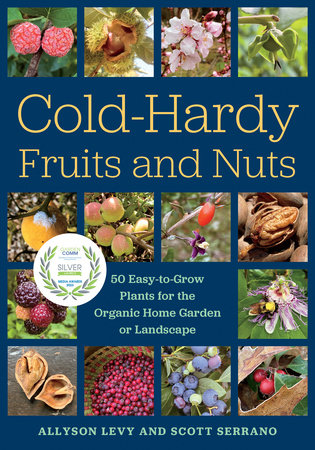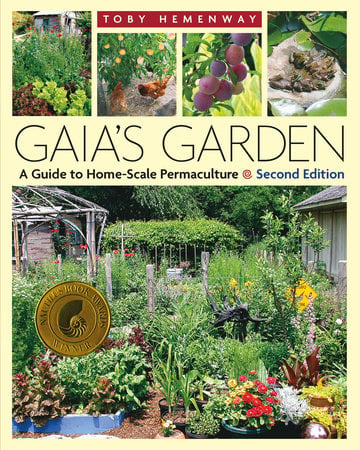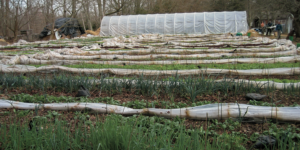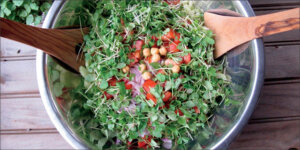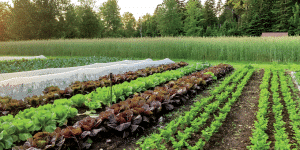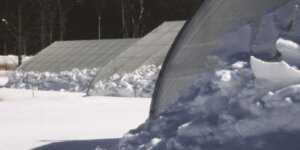Garden Strawberries — A Sweet and Delicious Ground Cover
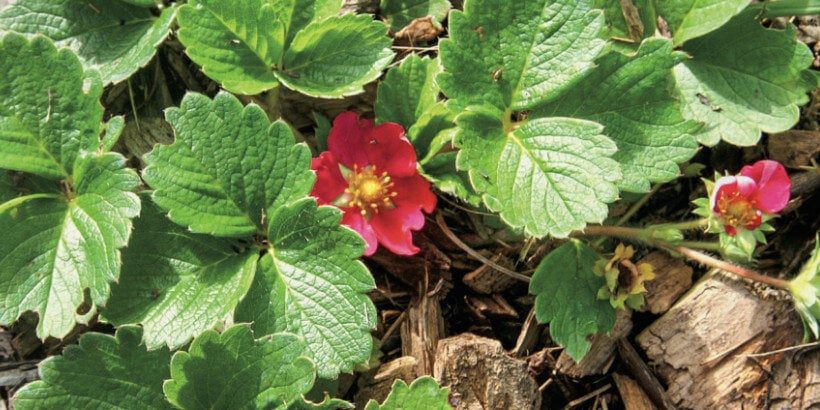
Garden strawberries are excellent for both covering the ground and for growing fruit. If you’re planning out a forest garden, or are just looking for a plant to use as ground cover, strawberries are a great option.
The following is an excerpt from The Home-Scale Forest Garden by Dani Baker. It has been adapted for the web.
Growing Garden Strawberries: Ground Covers
A basic principle of perennial gardening is to keep the ground covered with something, preferably something living, everywhere and always. Ground cover helps modulate soil temperature, absorb and preserve moisture, and nurture soil life.
Many of the plants described in this chapter can perform these functions for you admirably while simultaneously supplying nutritious edibles, attracting beneficial insects, and enhancing the aesthetics of your landscape.
As you learn about my experience with each, I am confident you will find some that are suited to your garden vision and habitats.
I am fond of strawberries as a ground cover, particularly the everbearing varieties. These low-growing plants flower and fruit throughout the growing season, beginning in June.
Some produce berries in prodigious amounts while others provide a delightful nibble as I wander through the garden.
Garden Strawberries (Fragaria x ananassa)
Native Range: Temperate regions of the Northern Hemisphere GC
Height: 6 to 10 inches (15–25 cm)
Spread: Varies by type
Soil Conditions: Moist but well-drained soil Sunlight: Prefers full sun
USDA Hardiness Zones: 3 to 9, depending on type
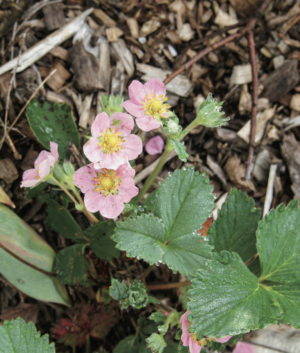
The large pink flowers of the day-neutral Gasana F1 strawberry adorn the groundcover layer.
Strawberries can fill a range of ground cover niches in a forest garden. There are two types of garden strawberry plants: Junebearers and day-neutrals (also called everbearers).
June bearers produce fruit only in late spring; day-neutrals bloom and fruit throughout the growing season, beginning in June. When grown commercially, strawberries have a two-year life span.
In my garden, they have persisted much longer, and their output waxes and wanes over the years.
Whether they produce a bountiful crop or just a few berries, they usually provide a decent ground cover to protect the soil and deter weeds.
Strawberries also have two distinct growth habits: running and clumping.
Runner types spread through horizontal stems or stolons that extend out over the ground surface and periodically send out roots to form new plantlets.
Clumpers form a mound as they spread slowly outward from the center, producing very few or no runners.
In addition to their sumptuous fruits, strawberry flowers are edible, providing a lovely garnish or ingredient in salads. The leaves can also be used for flavoring teas and medicine.
These are some garden strawberry varieties that I am particularly fond of.
Gasana F1
This clumping, day-neutral strawberry has showy, bright pink flowers and large, tasty berries.
I grew this variety from seed, and when the young plants were ready for transplanting, I planted them out as a border next to the lime-stone access route that runs through a portion of my garden.
In this sunny location, the extra heat radiating from the stone helps them bloom and fruit from early June to late November.
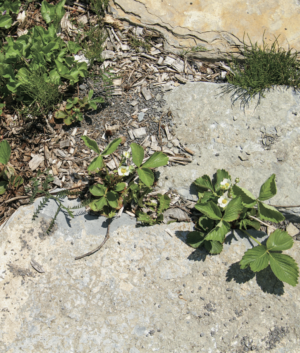
These Mara des Bois strawberries are spread- ing as runners root into the gaps between patio stones.
Mara des Bois
This day-neutral strawberry was developed by a breeder in France. It bears white flowers and small-to-medium-sized, aromatic, and flavorful fruits.
It spreads via runners, so it provides a decent ground cover if placed in ample light and evenly moist soil.
I planted this cultivar in a sunny spot where the soil moisture fluctuates naturally with precipitation.
When it rains regularly, the plants flower and produce luscious berries from mid-June well into November!
In times of drought, they become dormant, then come back to life and flower again with rain.
In order to beat the competition (birds, slugs, and chipmunks) to the harvest, I often pick the berries before they turn completely red but after they have already developed their high fragrance and flavor.
In some years, I have netted the plants to protect them from critters but found that despite my efforts, clever chipmunks figure out how to crawl underneath the nets.
Early and late in the season, I cover these strawberries with a floating row cover to protect the flowers from frost.
If frostbitten, the yellow centers of the blooms turn black and will not produce fruit. Strawberry plants also benefit from a winter blanket of leaves applied after the ground begins to freeze, usually sometime in December.
As your garden develops, the layers of deciduous plants will apply this mulch for you as their leaves fall in autumn.
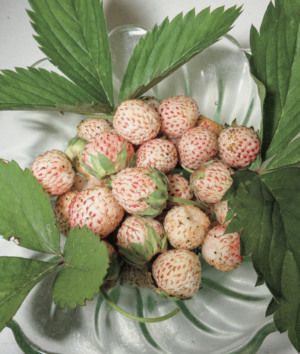
A harvest of Junebearing pineberries.
Pineberry
A Junebearing cultivar, its unusual berries are white with small red seeds and taste like pineapple.
When perfectly ripe, pineberry’s aromatic fruit acquires a pale pink blush and is best consumed immediately.
These berries are so perishable that once, when I attempted to make a jam with them, they dissolved into a thick syrup instead.
It might be possible to preserve pineberries by freezing them, though I haven’t tried this method.
Pineberries can cease to produce palatable fruit after three or four years, but they persist as a dense ground cover.
These hardy plants often remain green all winter underneath the snow, resuming their growth in early spring.
Tarpan F1
This attractive day-neutral strawberry has deep rose-colored blooms and tasty, small- to medium-sized fruit. It spreads slowly via runners.
My Tarpan grows well as a ground cover under honeyberries.
I have also recently interplanted Tarpan with Gasana, expecting that this combination of clumping and running strawberries will provide beautiful contrasting blooms and suitable ground cover for years to come.
Recommended Reads
Recent Articles
Building a cold frame is a simple way to extend your planting and growing season! They last for years, allow you to garden earlier in the spring and let you extend the growing season by protecting tender vegetables from frost.
Read MoreGrowing year-round is a challenge, but it’s not impossible. Follow these growing tips, and you’ll be well on your way to growing year-round!
Read MoreDoes the cold weather have you dreaming about fresh greens and colorful salad? Tired of waiting for spring to enjoy fresh greens? Grow and harvest sprouts indoors to make those dreams a reality!
Read MoreNo heated greenhouse? No problem! Discover the secrets to thriving winter gardening without breaking the bank.
Read More


